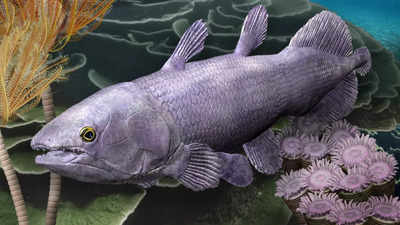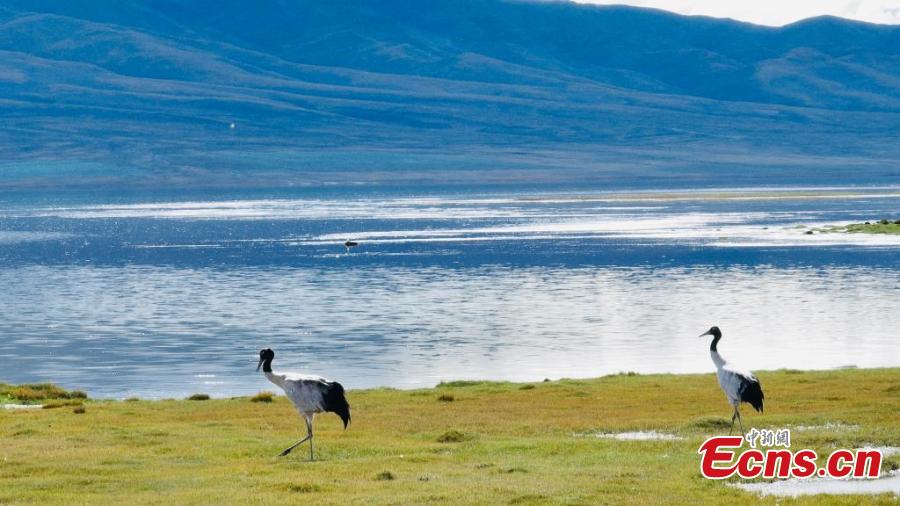
Extraordinary fossil discoveries reveal an important link between plate tectonics and extreme evolutionary changes just like that of a well-preserved ' Devonian coelacanth' fish that was just discovered in Western Australia. Such discoveries fill out history gaps and even suggest active processes of evolution in species that have been so very frequently referred to as ' living fossils '. What are living fossils? A living fossil is a species that essentially looks like a species known only from fossils that have remained largely unchanged from earlier geologic times.
The term was originally used by Charles Darwin in his book On the Origin of Species published in 1859. What do evolutionary insights derive from ancient fossils? According to longtime research, it is established that climate change and asteroid impacts both contribute to the formation and extinction of species. However, it is now being discovered in fossil finds that tectonics too, have a role in species evolution.

Ancient primitive 'Devonian coelacanth ' fish were recently brought to the surface in the interior regions of Western Australia that date back to a period of intense tectonic activity ( movements within the Earth's crust). A study published earlier in Nature Communications, reveals excitingly new findings about the history of the evolution of ancient creatures. India’s lone fossil of world’s oldest animal discovered in MP’s Bhimbetka Caves Coelacanths are often known as living fossils, as their lineage dates back an incredible 420 million years.
The discovery, named 'Ngamugawi Wirngarri', was found at the Gogo formations in Gooniyandi Country(Kimberly region of Western Australia). Flinders University researchers along with international colleagues suggest that coelacanth evolution was largely influenced by movements of tectonic plates. The discovery increases our understanding of the evolutionary history of coelacanths and how geological events have acted upon life on Earth.
This study thus highlights periods of tectonic activity as it causes change in the evolutionary context and informs new ideas that link Earth's physical changes with the evolution of its inhabitants. Does this fill an important gap in the history of fossils? The fossil from the Gogo Formation in Western Australia has been described by researchers led from Flinders University, joined by experts from Canada, Australia, and Europe. 'Ngamugawi Wirngarri', the newly discovered Coelacanth is an extinct form of species that fills a really important gap between the primitive Coelacanth forms and 'anatomically modern ones.
' Dr Alice Clement is an evolutionary biologist and a paleontologist from Flinders University said in a new study published in Nature communications, “We are thrilled to work with people of the Mimbi community to grace this beautiful new fish with the first name taken from the Gooniyandi language,” says first author Dr. Alice Clement, an evolutionary biologist, while paying respect to the cultural heritage of the region, the scientific value of this discovery also gets a boost through this partnership. The fossil fills important gaps between their earliest known forms and more advanced descendants in the history of coelacanths.
She further says, “Our analyses found that tectonic plate activity had a profound influence on rates of coelacanth evolution. Namely, new species of coelacanth were more likely to evolve during periods of heightened tectonic activity as new habitats were divided and created”. This study confirms that the Gogo Formation of the Late Devonian is one of the richest and best-preserved assemblages of fossil fishes and invertebrates on Earth.
113339524 The modern-day coelacanth and its ancestral journey: The coelacanth is a remarkable deep-sea fish found along the coasts of eastern Africa and Indonesia up to 2m in length. They are "lobe-finned" fish, in other words, having robust bones in their fins, rather like the bones in our own arms, and thus are closely related to lungfish and tetrapods-the backboned animals with arms and legs such as frogs, emus, and mice-than most other fishes are. The coelacanths have lived on Earth for the last 410 million years; a total of over 175 species have been discovered.
Although coelacanths diversified greatly during the Mesozoic Era, which is often referred to as the age of dinosaurs, with some species growing into peculiar body forms, they disappeared inexplicably from the fossil record during the end of the Cretaceous Period 66 million years ago. The end-Cretaceous extinction caused by the impact of a large asteroid destroyed some 75% of all life on Earth, as well as all non-avian (bird-like) dinosaurs. Therefore, it was assumed that the coelacanth fishes were swept away as one of the casualties of the same mass extinction event.
But in 1938, people fishing off South Africa pulled up a large mysterious-looking fish from the ocean depths, with the 'lazarus' fish going on to gain cult status in the world of biological evolution. Rethinking the 'Living Fossil' Concept: Another senior author and vertebrate paleontologist Professor Richard Cloutier, UQAR Rimouski from Canada, believes that the new Nature Communications study contradicts the opinion that survivors are the oldest 'living fossils'. "They first appear in the geological record more than 410 million years ago, with fragmentary fossils known from places like China and Australia.
Still, most of the early forms remain poorly known, making Ngamugawi Wirngarri the best-known Devonian coelacanth". “As we slowly fill in the gaps, we can start to understand how living coelacanth species of Latimeria, which commonly are considered to be ‘living fossils,’ actually are continuing to evolve and might not deserve such an enigmatic title,” says Professor Cloutier in his 'Comparative study of fossiliferous sites of the Devonian'. He is a former honorary visiting scholar at Flinders University.
.










